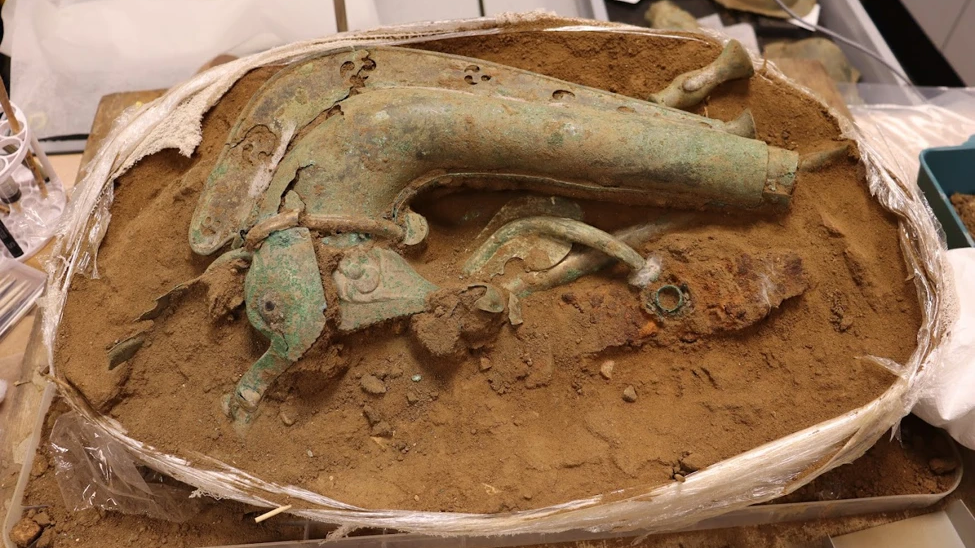Key to Humans' Big Brains Discovered

A new type of stem cell has been discovered in the human brain, one that might have contributed to the evolution of bigger and more complex brains in humans, according to a recent study.
The cells help form the neocortex, or the outer layer of the brain. While other animals have a neocortex, the one in humans and non-human primates is more expanded, and is thought to confer unique human abilities, such as language and consciousness.
Although the newly discovered stem cells are probably present in other animals, including cats and dogs, humans likely have more of them, and these stem cells are more active in us, says study researcher Arnold Kriegstein, a neurologist at the University of California, San Francisco.
Since neural stem cells develop into neurons, this difference would lead to human brains evolving to have more brain cells (and bigger brains) compared with other animals, Kriegstein said.
However, the brains of rats and mice aren't equipped with these new stem cells, and so the findings further emphasize that brain research on rodents should be looked at with caution. Diseases such as autism, schizophrenia, learning disabilities and Alzheimer's all affect the neocortex, Kriegstein said, and they are all being studied in mice.
"When it comes to this particular part of the brain, the neocortex, because it's so different in people than in mice, I think we need to understand the differences if we are going to be able to study [those brain diseases] properly," Kriegstein said. "The question is, how good a model is a mouse model for autism or for dementia or for a learning disability — I think probably not a very good model," Kriegstein told LiveScience.
The results were published in the March 25 issue of the journal Nature.
Get the world’s most fascinating discoveries delivered straight to your inbox.
Brainy stem cells
Stem cells are special types of cells that can renew themselves indefinitely and also have the ability to form multiple types of cells in the body.
Some stem cells are more restricted in what cell types they can go on to form. For instance neural stem cells can only go on to form neurons, Kriegstein said.
In the developing brain of a fetus, stem cells known as radial glial cells form precursor cells, which eventually become neurons in the neocortex. But these cells first pop up in a brain region called the subventricular zone before settling into the neocortex.
Both humans and rodents have a subventricular zone. However, unlike rodents, humans and other primates have an expanded region of this zone, called the outer subventricular zone. Scientists had suspected that there were also stem cells in this region, but none had been identified before.
How a fetus gets brain cells
Kriegstein and his colleagues used the latest biotechnology to label and track cells over time from fetal brain tissue that had been donated for research. They were able to identify stem cells in the outer subventricular zone using specific markers unique to stem cells. They were also able to examine the behavior of these cells, including how they divide, Kriegstein said.
They saw these new stem cells resembled radial glial cells in many ways, but they were different in how they divided, Kriegstein said. Specifically, they underwent distinctive movements that the scientists hadn't seen before.
"We don't entirely understand the significance of the movements, but they are very distinctive and characteristic of these kinds of cells," Kriegstein explained.
Future studies will look into how these new stem cells in the outer subventricular zone work together with the more primitive radial glial cells in the subventricular zone to produce the neocortex. It's likely that both of these cells end up in the same layer of the neocortex and interact to make the brain more complex, Kriegstein said.
"There may be a mosaic of cell types in the human neocortex, in which there are cells that originate in the traditional zone and cells produced in the newer zone that intermix in the cortex," Kriegstein said. "The complexity of the primate neocortex may be significantly increased by the interaction of the evolutionarily-speaking 'younger' neurons with those originating in the more primitive zone," he said.
The study was funded by grants from the California Institute for Regenerative Medicine and the Bernard Osher Foundation.
- 10 Things You Didn't Know About the Brain
- Top 10 Mysterious Diseases
- Odd Things You Didn't Know About You

Rachael is a Live Science contributor, and was a former channel editor and senior writer for Live Science between 2010 and 2022. She has a master's degree in journalism from New York University's Science, Health and Environmental Reporting Program. She also holds a B.S. in molecular biology and an M.S. in biology from the University of California, San Diego. Her work has appeared in Scienceline, The Washington Post and Scientific American.


